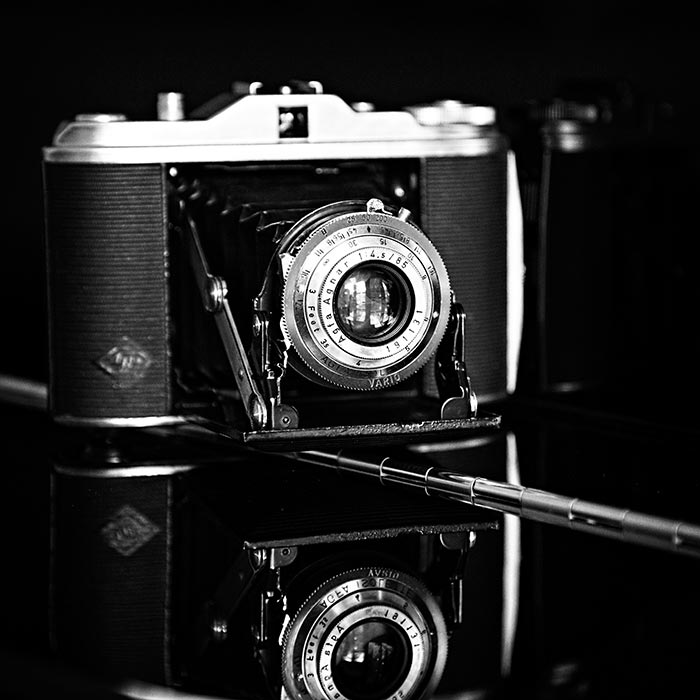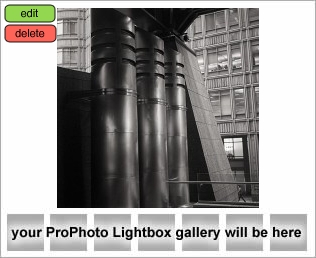
I’ve always liked old cameras, but I only recently started to collect them. Actually, the first SLR camera that I owned and used to teach myself photography with back in the 1980s is pretty vintage these days, but this one is even older than that. This is an Agfa Isolette I folding camera, which was made between 1952 and 1960, so it’s older than me too. Agfa made a range of cameras under the Isolette name and they varied in the quality of the components and features, and hence the price. This is one of the basic models and has an Agnar 85mm f/4.5 lens and a Vario shutter which has settings of 1/25, 1/50, 1/200 and B.
Vintage cameras like this would make interesting ornaments, but I don’t want them just to look at – I want to see what I can create with them. I bought this one from the My Vintage Camera stall at Spitalfields Market in London. If you are in London and are interested in vintage cameras, then it’s worth getting over to the market on a Thursday to have a look. The owner, Ian, is very knowledgeable and helpful, and all of his cameras have been checked over and are guaranteed to work.
The Isolette uses 120 roll film and everything about it is completely manual. The lens will focus between 3ft and infinity by turning the focus ring at the front, but this basic model does not come with a rangefinder, so setting the distance is guess work. There are also rings on the lens for the aperture and shutter speed, as well as a lever to cock the shutter. Cocking the shutter and winding on the film are done independently, which makes it easy to get creative with double exposures. It also makes it easy to get unintentional double exposures if you forget to wind on, which I did several times with the first roll of film I put though it! 🙂
So far, I have only shot one roll of Tri-X with this camera and you can see a few of the scanned negatives below. I have a Sekonic L-358 light meter, which made setting the exposures no problem, but the tricky part was estimating the focusing distances. It’s fun to use and, considering that this was my first attempt, I’m quite pleased with the results and looking forward to experimenting more with it.
